Spiritual Symbols and Their Meaning: Cross, Star of David!
Spiritual symbols have been a part of human history for thousands of years, each carrying its own profound meaning and significance.
They often encapsulate complex ideologies, beliefs, and concepts that are central to the spiritual or religious systems they represent.
These symbols can be found in countless forms, from ancient texts and artifacts to modern representations in art and culture.
Spiritual symbols serve as visual shorthand for deeper metaphysical truths or divine concepts.
For example:
Each symbol carries layers of interpretation and is often used in rituals, art, meditation, and worship to convey and connect with the spiritual truths they signify.
From the serene lotus flower to the intricate mandala, spiritual symbols encapsulate profound universal truths and serve as gateways to deeper understanding and connection.
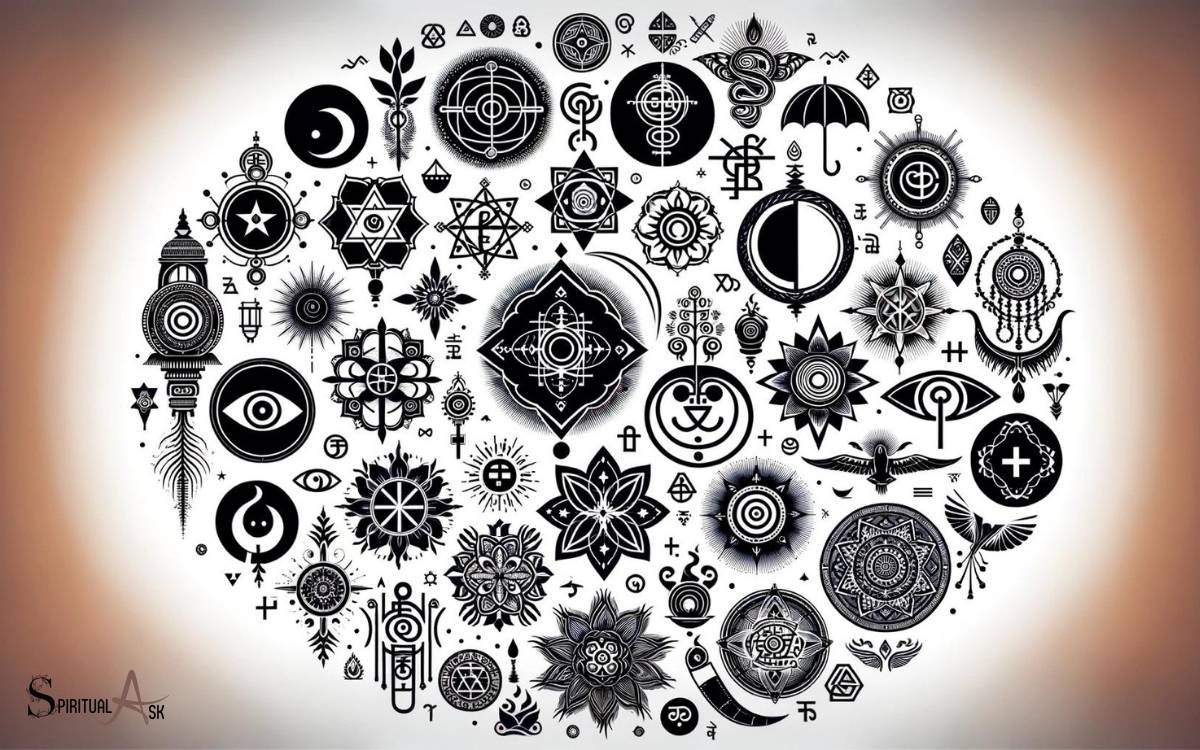
Key Takeaway
Origins of Spiritual Symbols
Where did spiritual symbols originate and what do they represent? The origins of spiritual symbols are deeply rooted in human history and culture.
They have been used by various civilizations to represent beliefs, values, and connections to the divine.
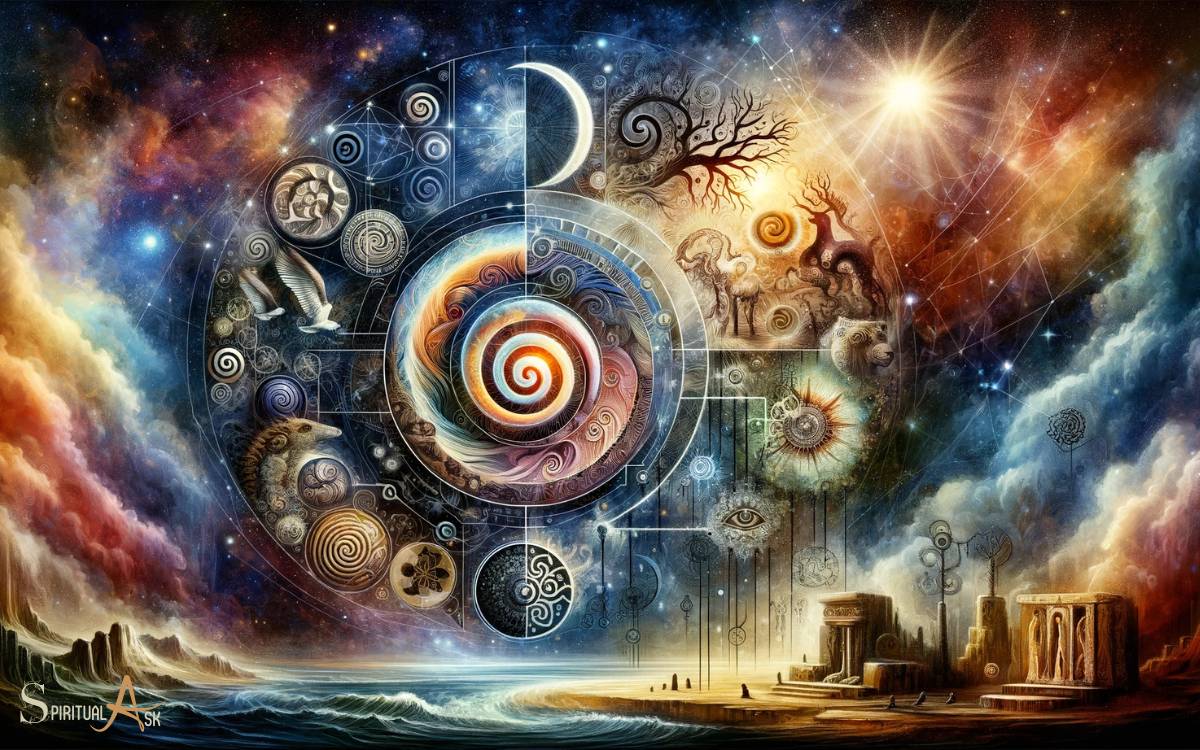
From ancient Egyptian hieroglyphics to the Yin and Yang symbol in Taoism, spiritual symbols have served as a means of expressing complex ideas and concepts that are central to different faith traditions.
These symbols often embody universal themes such as love, wisdom, and the interconnectedness of all things. They can also serve as reminders of the spiritual journey and the quest for enlightenment.
Understanding the origins of these symbols provides insight into the rich tapestry of human spirituality and the enduring quest for meaning and purpose.
Universal Symbolism in Different Cultures
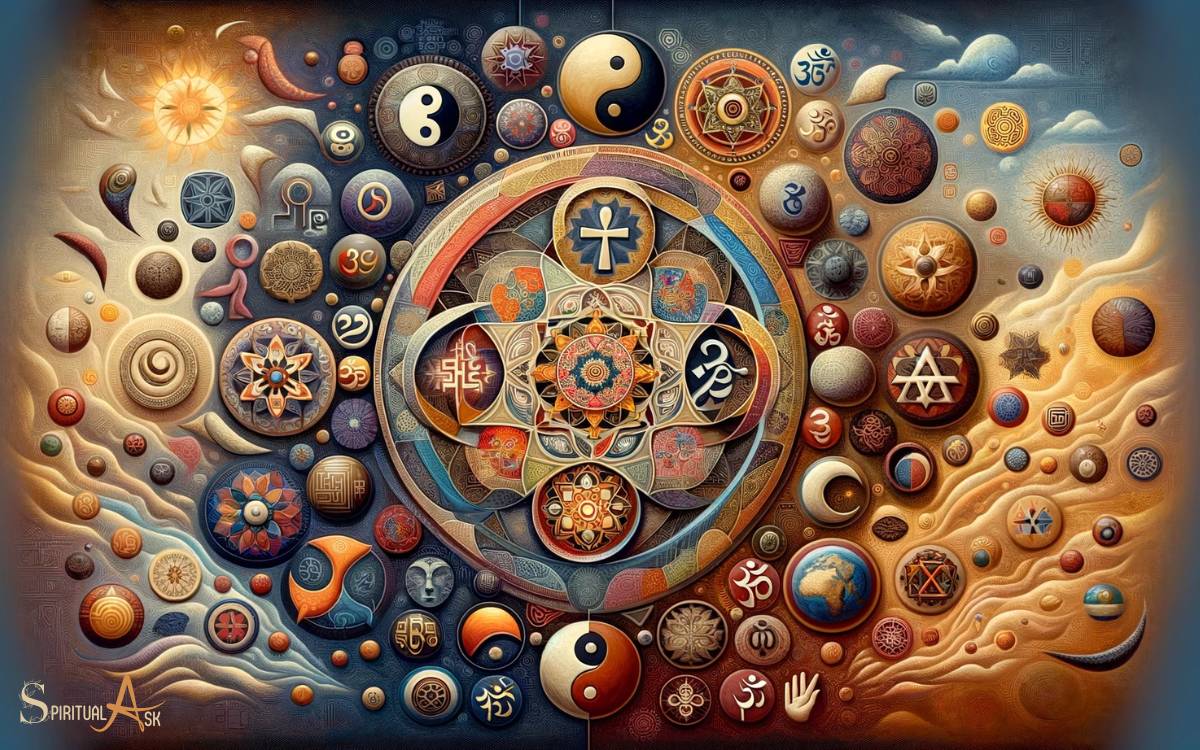
The origins of spiritual symbols from various civilizations have contributed to a rich tapestry of universal symbolism in different cultures, reflecting beliefs, values, and connections to the divine.
Common Themes:
- Many cultures incorporate symbols of nature, such as the sun, moon, or animals, to represent universal concepts like life, death, and rebirth.
- Symbols like the lotus flower and the tree of life appear across different cultures, symbolizing enlightenment, growth, and interconnectedness.
- The use of geometric shapes and patterns, such as the mandala, can be found in diverse cultural and spiritual practices, representing unity and harmony.
Symbolic Meanings:
- While the specific symbols may vary, there are often shared meanings, such as protection, guidance, and the cyclical nature of existence.
Cultural Adaptations:
- Despite cultural differences, these symbols often adapt to local beliefs, incorporating unique interpretations while retaining their universal essence.
The Power of Nature Symbols
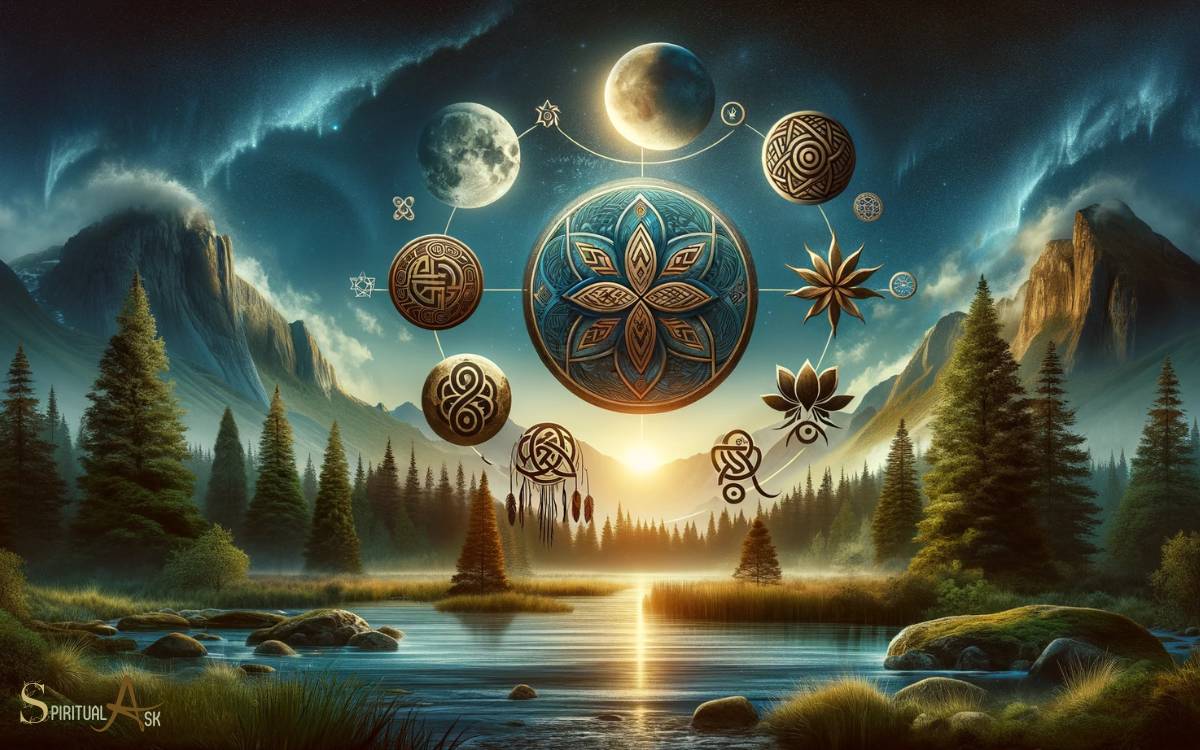
I’ll explore the significance of nature symbols in spiritual practices. Nature symbols hold deep meaning across various spiritual traditions, representing the interconnectedness of all living beings and the divine presence in the natural world.
Here’s a table summarizing the power of some common nature symbols:
| Symbol | Meaning | Cultural Association |
|---|---|---|
| Tree | Growth, strength, connection | Many cultures worldwide |
| Sun | Life, energy, source of light | Ancient Egyptian, Aztec |
| Moon | Intuition, femininity, cycles | Greek, Roman, Celtic |
| Water | Purification, rebirth, fluidity | Hindu, Native American |
These symbols serve as reminders of the sacredness of nature and our place within it, encouraging reverence for the environment and the cycles of life.
Understanding these symbols can deepen spiritual connections and foster a sense of harmony with the natural world.
Sacred Geometry and Symbolism
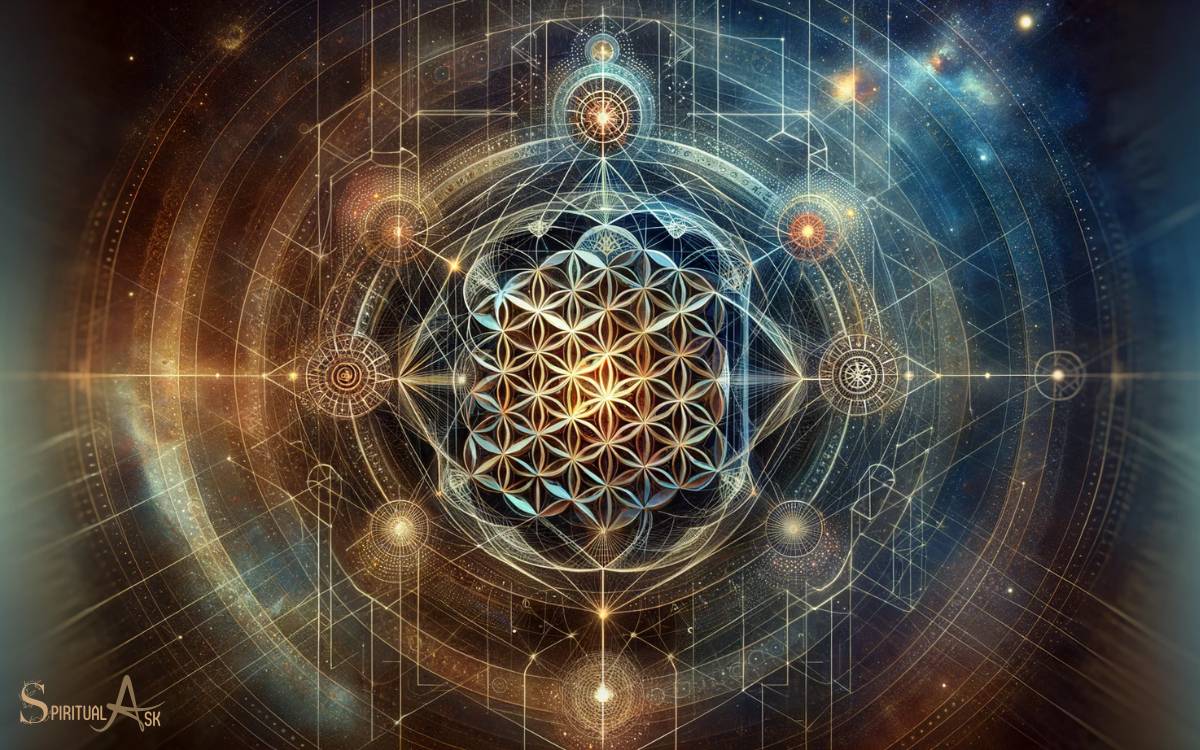
One significant aspect of spiritual symbolism is the exploration of sacred geometry and its profound meanings across various traditions.
When delving into sacred geometry and its symbolism, it’s important to consider:
- Universal Patterns: The recognition of geometric shapes and patterns as universal symbols found in nature and throughout the cosmos.
- Meaningful Proportions: Understanding the significance of mathematical proportions such as the golden ratio and Fibonacci sequence in spiritual representation.
- Architectural Significance: Exploring the use of sacred geometry in the design of sacred spaces and religious structures, reflecting deeper spiritual concepts.
The study of sacred geometry unveils a universal language that transcends cultural barriers, offering a deeper understanding of the interconnectedness of all things. This exploration sets the stage for delving into the symbolism found in religious traditions.
Symbolism in Religious Traditions
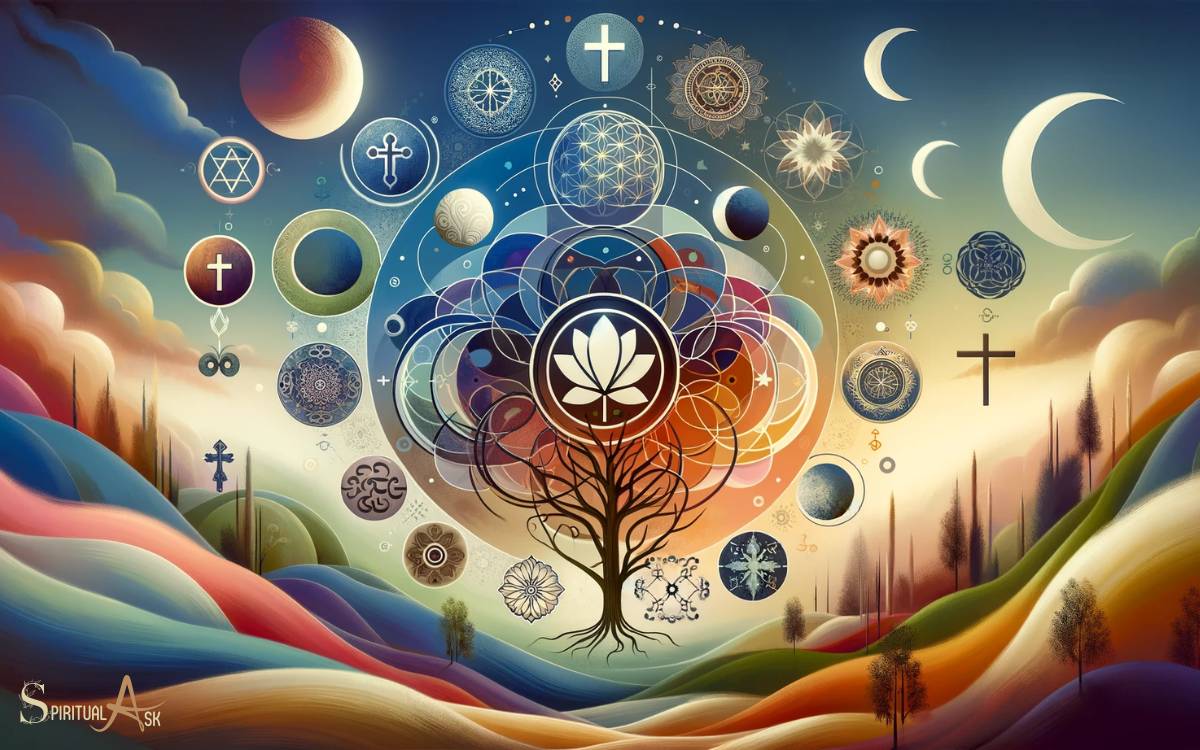
Exploring the symbolism present in religious traditions unveils rich layers of meaning and significance. Symbols in religious traditions often carry deep spiritual, cultural, and historical significance.
They serve as a means of connecting individuals to their faith, conveying complex theological concepts, and providing a visual representation of abstract ideas.
For example, the Christian cross is a powerful symbol representing the crucifixion and resurrection of Jesus Christ, while the lotus flower holds profound significance in Buddhism, symbolizing purity and enlightenment.
In Hinduism, the Om symbol represents the sound of the universe and the essence of ultimate reality. These symbols not only hold religious significance but also serve as a source of unity and identity for communities of faith.
Understanding these symbols is essential for appreciating the depth of religious traditions and their impact on individuals and societies.
The 6 Most Powerful Spiritual Symbols on The Planet
Defining the “most powerful” spiritual symbols can be subjective and vary depending on cultural, religious, and personal beliefs.
However, some symbols are widely recognized for their profound spiritual significance and global influence.
Here are six such symbols
- The Cross: Perhaps the most widely recognized symbol of Christianity, the cross represents the crucifixion and resurrection of Jesus Christ. It embodies themes of sacrifice, redemption, love, and divine grace.
- The Om/Aum Symbol: This sacred symbol is central to Hinduism, Buddhism, and Jainism. It represents the primordial sound of the universe, encompassing creation, preservation, and destruction.
- The Yin-Yang Symbol: Originating from Chinese philosophy, the Yin-Yang symbol represents the dual forces of nature, such as light and dark, masculine and feminine, and balance.
- The Lotus Flower: Found in Hinduism, Buddhism, and other spiritual traditions, the lotus flower symbolizes purity, enlightenment, and spiritual rebirth.
- The Ankh: An ancient Egyptian symbol, the ankh resembles a cross with a loop at the top. It is a symbol of life, eternal life, and regeneration. It represents the divine and the continuation of existence beyond physical death.
- The Eye of Horus (The Eye of Ra): An ancient Egyptian symbol of protection, health, and power, the Eye of Horus is associated with the god Horus and the goddess Wadjet.
These symbols have transcended cultural and religious boundaries to become universally recognized representations of profound spiritual concepts and experiences. They continue to inspire and guide individuals on their spiritual journeys across the globe.
Modern Interpretations of Spiritual Symbols
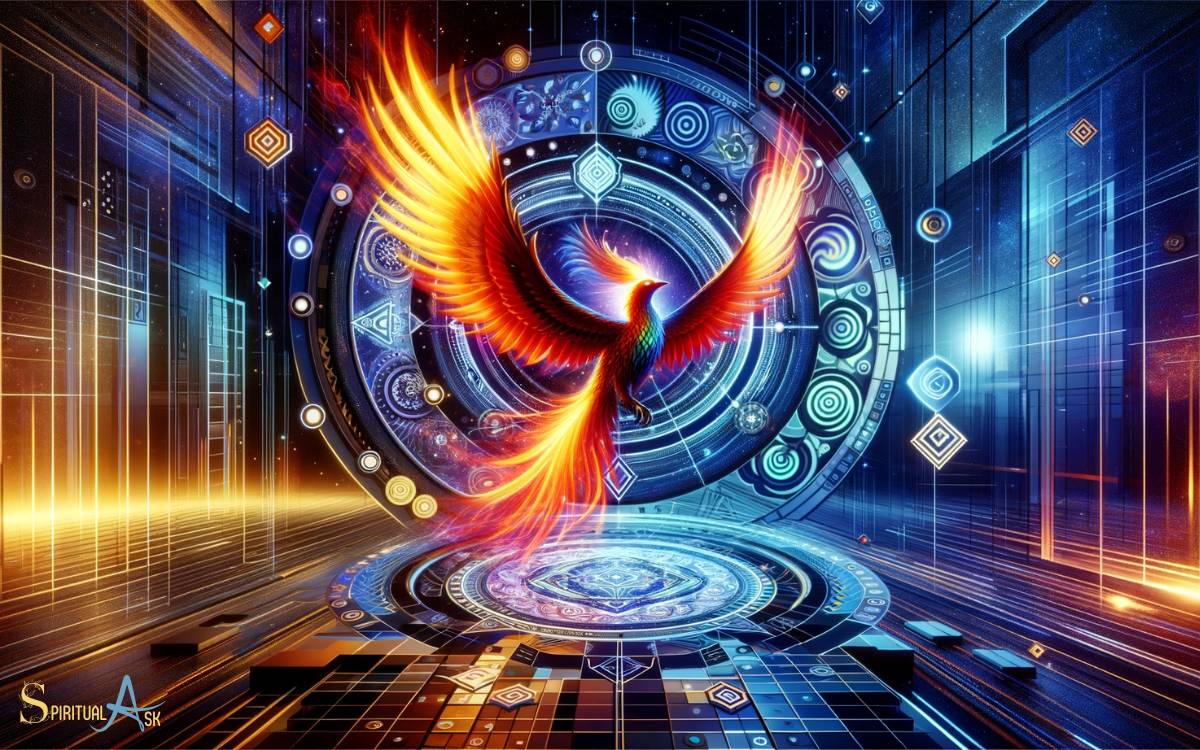
Transitioning from the rich symbolism in religious traditions, I now delve into modern interpretations of spiritual symbols and their evolving significance in today’s world.
Individual Perspective
- Personalized meanings based on experiences and beliefs
- Embracing symbols that resonate with one’s inner journey
- Using symbols as sources of strength and guidance
Global Connectivity
- Symbols transcending cultural and religious boundaries
- Uniting people through shared meanings and values
- Embracing diversity and fostering mutual understanding
Technological Integration
- Incorporating symbols into digital communication
- Adapting traditional symbols to modern contexts
- Creating new symbols to represent contemporary spiritual concepts
In today’s diverse and interconnected world, modern interpretations of spiritual symbols reflect a deeply personal yet globally relevant significance, demonstrating their enduring relevance and adaptability. Throughout history, spiritual symbols have often served as a way to connect people across different cultures and belief systems. The spiritual symbolism of a bridge, for example, represents the idea of connection and unity, transcending barriers and bringing people together. This interpretation of the bridge as a spiritual symbol can be found in a variety of cultures and religions, highlighting its universal appeal and timeless relevance.
Conclusion
As I journeyed through the world of spiritual symbols, I felt like a traveler on a winding path, uncovering the ancient wisdom and universal truths hidden within these sacred images.
Each symbol, like a key to a mysterious door, unlocked a deeper understanding of the interconnectedness of all things.
It’s as if these symbols whispered secrets of the universe, guiding me towards a greater sense of purpose and inner peace. The power of these symbols is truly awe-inspiring.






